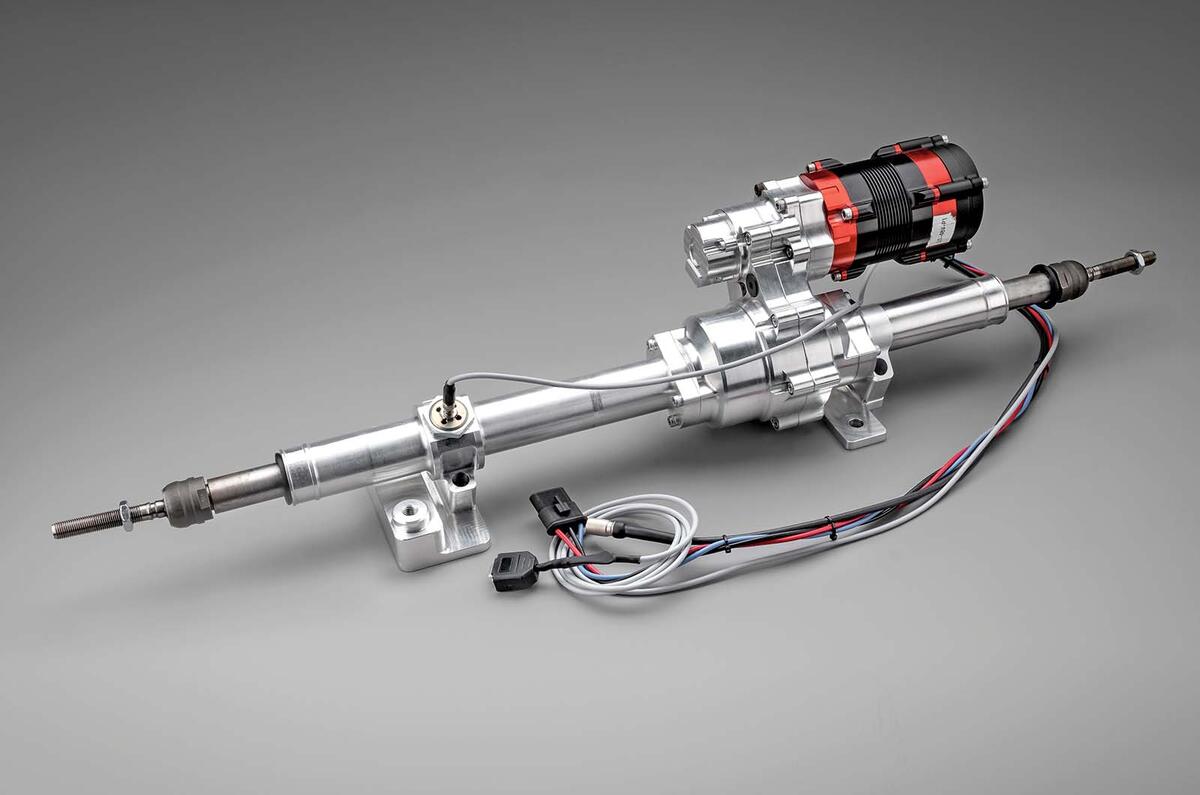Steer-by-wire is one of those technologies that has remained on the fringes for a couple of decades, but as these systems become increasingly sophisticated, they can be used to engineer driver involvement into a car’s handling and performance capabilities.
Steer-by-wire systems retain the familiar steering rack, driven by an electric motor like a conventional electric power steering system (EPAS), but with no steering column or other mechanical connection to the driver.
The latest steer-by-wire electric systems give engineers the opportunity to get exactly the characteristics they need for a particular car, from dawdling around town to a brisk drive on B-roads or a motorway cruise.
Steer-by-wire also fits the bill for utilitarian applications, such as commercial and autonomous vehicles.
It is due in the Toyota bZ4X this year, and will be in the Lexus RZ 450e in 2024. Infiniti introduced it in the Q50 almost 10 years ago but the ‘redundancy’ was mechanical, with a steering column remaining in place, just in case.
True steer-by-wire has no mechanical connection between the steering wheel and steering rack, just an electronic link, and that’s what the Toyota and Lexus One Motion Grip system will have.
Although it may seem like a dodgy idea, there are many benefits, both for manufacturers and drivers. Steer-by-wire comes under the broader category of drive-by-wire elements, such as electronic throttle control, which have been in production for years. One advantage for manufacturers of by-wire systems is the potential to produce a ‘dry’ chassis, with no hydraulic fluid involved.
The idea is for each suspension corner of the car to be pre-assembled and bolted on to the car on a production line and literally plugged in, doing away with messy hydraulic fluid and all that entails. The ratio is reduced as the car gathers speed, slowing the response right down at motorway speeds to avoid the car becoming twitchy.
UK firm Titan, which started life in the 1960s developing racing cars, is now a specialist in advanced steering systems. It has recently developed a precision steer-by-wire system aimed at lower-volume manufacturers that not only work with smaller numbers but also may need a bespoke system tailored for, say, a sports car or an autonomous delivery van.
Autonomous vehicles need autonomous steering, but there are advantages for human drivers too. An example is a variable steering ratio and variable weight. With no mechanical connection, the ratio can be lowered when cruising in the straight-ahead, making the steering less sensitive to unwanted inputs.





Join the debate
Add your comment
A perfect example of a solution looking for a problem. Will the force feedback be adjustable? Does this mean sim racing can be both sim and real life at the same time? Has anybody had fully electric power assisted steering go wrong? How much warning was there? Will this have adequate diagnostics to warn people of imminent problems? Not everyone has a good enough feel for when something's in early stages of going wrong. Why not just make cars that only need a regular "old school" unassisted rack?